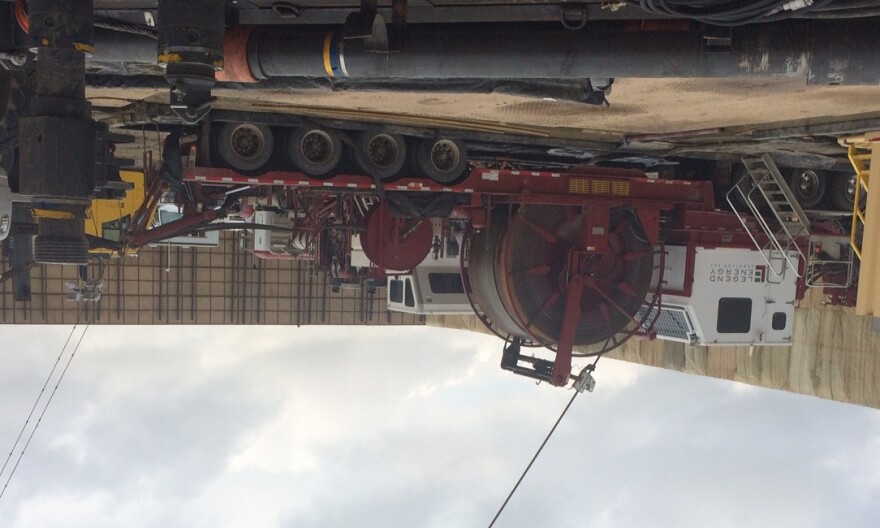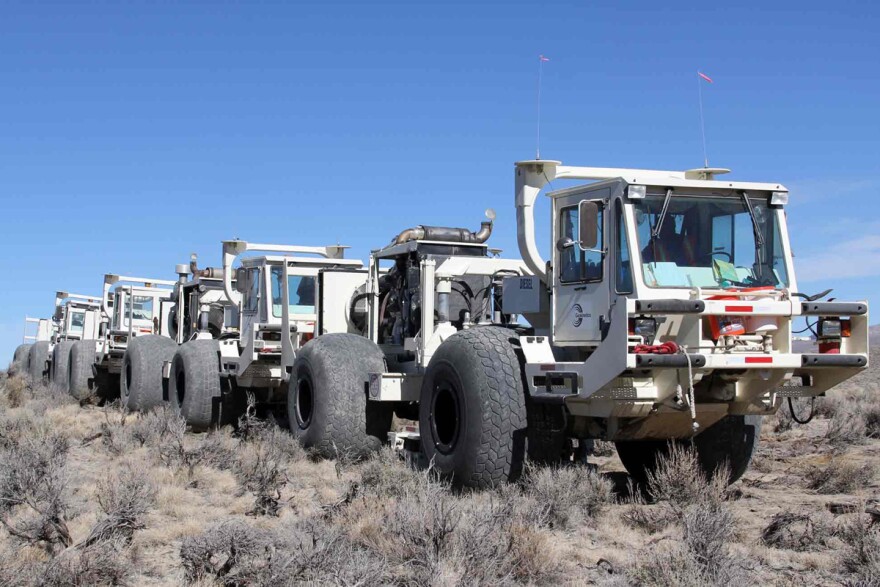Oil and gas development east of I-25 requires thousands of truck trips every day along Eastern Colorado's major and not-so-major thoroughfares. Some of these conveyances have an obvious appearance and connection to the boom. Think tanker trucks transporting oil away from the well pad. Others are strangely unusual, resembling a monster truck on steroids or a ride fit for a lunar colony.
Janet Lundquist, a traffic engineer for Weld County, said it's not uncommon to get questions about large, oversize vehicles moving along local roads and highways.
"Usually the question is about the cranes and things like that — because they're large," she said.
Crane trucks and other giants on the road require local permits because the county wants to check for low-slung power lines and other challenges along routes.
Even in a region in which the public also sees mammoth windmill blades and jumbo-sized agricultural equipment on the roads, Lundquist said some trucks spark public interest.
"Sometimes we can answer and sometimes we can't," she said. "There's general excitement about how things move from point A to point B."
Without further ado, here's a handy explainer of the usual — and not-so-usual — vehicles of Colorado's oil fields.
Vibroseis Truck (aka, Thumper Truck)
Thumper trucks are equipped with a large metal foot that emits low-frequency sound waves. Geophysicists use this to scope out underground oil and gas formations. Thumper trucks' giant tires make them especially fit for hilly terrain, but they sometimes can be seen in residential areas — we even caught one outside of the KUNC studios.
Companies use the surveying technique before they drill test wells. Still residents near development have raised concerns about the impact of such trucks. Groups associated with the energy industry have also weighed in.
The trucks' giant tires make them unfit for highway driving. If they're being transported long distances, it's most likely to see them on lowboys or trailers.
Moving A Drilling Rig

Drilling rigs can be small or large, and setting one up requires a convoy of flatbed truck and trailers to transport a rig's puzzle pieces. The giant structure can break down into 60 to 100 different pieces and it typically requires a special transport permit for movement along local roads. Weld County requires companies to submit routes for permits. On some of western Colorado's more treacherous mountain roads, transporting a drilling rig can require a large CAT to help pull the semi along.
The weight of the different elements can be heavy, averaging 40,000-50,000 pounds per unit. Once all the pieces are on site, crane and pole trucks are needed to put them together.
Crane Truck

Depending on how large a drilling rig is, you may need a small or not-so-small crane to get your pieces into place. Smaller listing jobs on the well pad might involve stick boom or so-called "knuckle boom" cranes, which are lighter and more maneuverable.
Pole Truck
The Pole Truck is another key tool for assembling and breaking down a drilling rig. It's equipped with a pair of poles and hoisting equipment used for lifting heavy machinery. There's also a "winch deck" which winds up or lets out tension associated with the wire used by the truck for lifting.
http://youtu.be/2JUO73GKqeE
The above YouTube video will teach you how to drive a Pole Truck in three minutes. But it will not teach you the proper spelling for "winch" which it spells "wench."
Coil Tubing Truck

Like a big ball of yarn wrapped around a thimble, coil tubing on a truck is used to stage continuous tubing into an oil or gas well. There are small, intermediate and large units, which can impact how large the coil is. The tubing can be used to clean out wells, perforate the well bore, or as a means to retrieve lost or damaged equipment.
Fracking Pump Truck

This powerful truck with a 12-cylinder, 2,500 horsepower engine plays a key role in the hydraulic fracturing process. The engine drives the truck's pump, which resides on the tail end of the truck. Pistons push fluid into the pipe at a high pressure for the fracking process. Several of these trucks (6-12) are typically lined up around the well head during the fracturing process. The black rusted unit on the top of the truck is actually the muffler and used to emit exhaust.
Do you have a question about energy development (or anything else)? Ask KUNC in the comments or drop us a line at ask@kunc.org.






